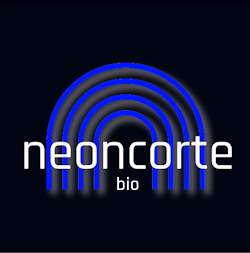🔬 Precision Detection | ⚡ Rapid Development | 🧬 Custom Oligonucleotide Design
AI-Engineered Aptamer Biosensors for Next-Gen Diagnostics
Harness the power of AI & machine learning to develop ultra-sensitive, high-specificity aptamer biosensors for medical, environmental, and industrial applications.

Why Choose Our AI-Powered
Aptamer Design Software & Tools?
Faster Development
AI reduces design time from months to weeks
High Sensitivity & Specificity
Machine learning-optimized aptamers for unmatched target binding
Versatile Applications
Electrochemical, optical, and diagnostic biosensors
Cost-Effective
Reduce R&D costs with in silico aptamer screening
Applications of Aptamer-Based Biosensors
Medical Diagnostics
- Early disease detection (cancer, infections, biomarkers)
- Point-of-care testing (POCT) devices
- Continuous monitoring (e.g., glucose, toxins)
Environmental & Food Safety
- Pathogen detection in water & food
- Toxin and heavy metal monitoring
Electrochemical Aptamer Sensors (E-AB)
- Real-time, label-free detection
- Portable & wearable biosensors
How Our AI-Driven Aptamer Design Works
✅ Result: 50% faster development and 10-100x higher sensitivity vs. traditional SELEX methods
- Target Analysis & Sequence Profiling
- AI Target Binding Prediction: Our algorithms analyze the 3D structure, charge distribution, and biochemical properties of your target molecule (protein, small molecule, cell marker).
- Epitope Mapping: Machine learning identifies optimal binding regions (e.g., hydrophobic pockets, charged residues) to maximize aptamer affinity.
- In Silico Aptamer ScreeningIn Silico Screening
- Generative AI Design: We use neural networks to generate millions of potential aptamer sequences tailored to your target.
- Affinity & Specificity Scoring: ML models rank sequences based on:
- Binding energy – Predicts strongest interactions.
- Cross-reactivity risk – Filters out sequences that may bind non-specifically.
- Stability – Checks for nuclease resistance (critical for diagnostic biosensors).
- Lab Validation & Optimization
- High-Throughput Screening (HTS): Top AI-predicted aptamers are synthesized and tested via:
- Surface Plasmon Resonance (SPR) – Measures real-time binding kinetics.
- Electrochemical Testing – Validates performance in biosensor formats (e.g., graphene electrodes).
- Iterative Refinement: AI retrains on wet-lab data to improve future designs.
- Biosensor Integration
- Ready-to-Use Aptamer Probes: We deliver functionalized aptamers (e.g., thiol-modified for gold electrodes) compatible with:
- Electrochemical aptasensors (impedance, voltammetry).
- Optical biosensors (fluorescence, colorimetric).
- Lateral flow assays (point-of-care diagnostics).
Frequently Asked Questions (FAQs)
Aptamer biosensors use synthetic DNA/RNA strands (aptamers) as bioreceptors to detect targets like proteins, toxins, or pathogens. They offer:
✔ Higher stability than antibodies (work in extreme pH/temperature).
✔ Reusability (regenerate binding sites easily).
✔ Customizability (easy chemical modification for sensor integration).
✔ Higher stability than antibodies (work in extreme pH/temperature).
✔ Reusability (regenerate binding sites easily).
✔ Customizability (easy chemical modification for sensor integration).
Traditional SELEX | AI-Driven Design |
Takes 6+ months | Weeks to design |
High lab costs | Reduces wet-lab experiments by 70% |
Limited sequence diversity | Explores billions of sequences in silico |
Yes! They are cheaper, faster, and portable for:
- Medical diagnostics (e.g., cardiac biomarkers, viral detection).
- Food safety (e.g., Salmonella, mycotoxins).
- Environmental monitoring (e.g., heavy metals in water).
Our AI-optimized aptamers achieve picomolar (pM) sensitivity—comparable to antibodies. Example:
- COVID-19 spike protein: Detected at 0.1 pM in saliva.
- Glucose monitoring: Continuous detection in <5 sec.
We provide pre-functionalized aptamers with:
- Thiol groups (for gold electrodes).
- Biotin tags (for streptavidin-coated surfaces).
- Fluorescent dyes (for optical detection).
Yes! Unlike antibodies, aptamers:
- Survive freeze-thaw cycles.
- Last years at room temperature (lyophilized form).
- Resist denaturation in harsh conditions.
Absolutely. We engineer aptamers with:
- Signal reporters (e.g., methylene blue for electrochemical sensors).
- Polymer backbones (e.g., 2’-fluoro for nuclease resistance).
- Quencher pairs (e.g., for FRET-based detection).
Ready to Integrate AI-Designed Aptamer Biosensors?
Neoncorte Bio
Where AI Meets Biotechnology
Neoncorte Bio is at the forefront of the convergence between artificial intelligence and protein engineering. Our team comprises experts in computational biology, bioinformatics, and machine learning, all driven by a mission to accelerate innovation in protein design. By leveraging our advanced AI models, we provide unparalleled software and tools that enhance efficiency, reduce costs, and push the boundaries of what's possible in protein engineering
Proud Member of Leading Global AI Programs
Neoncorte Bio is part of the NVIDIA Inception and Nebius for Startups programs — two of the world’s leading ecosystems for high-performance AI innovation. These partnerships strengthen our ability to deliver next-generation AI-driven protein, enzyme, and aptamer engineering.
-
 As a member of NVIDIA Inception, Neoncorte Bio gains access to cutting-edge GPU technologies, expert guidance, and a global AI ecosystem that supports companies from prototype to production. The program empowers us to explore new AI opportunities and build high-performance biological design pipelines powered by NVIDIA’s world-class platform.
As a member of NVIDIA Inception, Neoncorte Bio gains access to cutting-edge GPU technologies, expert guidance, and a global AI ecosystem that supports companies from prototype to production. The program empowers us to explore new AI opportunities and build high-performance biological design pipelines powered by NVIDIA’s world-class platform. -
 Through Nebius for Startups, we gain access to high-performance compute infrastructure optimized for large-scale AI workloads, along with hands-on technical guidance and a strong community of innovative AI companies. Nebius enables us to train and deploy complex biological models more efficiently — accelerating enzyme, protein, and aptamer design while supporting rapid scaling of our R&D pipelines.
Through Nebius for Startups, we gain access to high-performance compute infrastructure optimized for large-scale AI workloads, along with hands-on technical guidance and a strong community of innovative AI companies. Nebius enables us to train and deploy complex biological models more efficiently — accelerating enzyme, protein, and aptamer design while supporting rapid scaling of our R&D pipelines.
Publications
Explore our contributions to the forefront of biotechnology and artificial intelligence. From AI-driven enzyme engineering to deep learning applications in data analysis, our publications highlight innovative solutions to complex challenges in molecular biology and computational science.
- Modification of natural enzymes to introduce new properties and enhance existing ones is a central challenge in bioengineering. This study is focused on the development of Taq polymerase mutants that show enhanced reverse transcriptase (RTase) activity while retaining other desirable properties such as fidelity, 5′-3′ exonuclease activity, effective deoxyuracil incorporation, and tolerance to locked nucleic acid (LNA)-containing substrates.
- The transcriptomic data are being frequently used in the research of biomarker genes of different diseases and biological states. The most common tasks there are the data harmonization and treatment outcome prediction. Both of them can be addressed via the style transfer approach. Either technical factors or any biological details about the samples which we would like to control (gender, biological state, treatment, etc.) can be used as style components.
- List of all Neoncorte Bio publications dedicated to Molecular Biology, Biotechnology, Artificial Intelligence and Artificial Neural Networks, published mostly by Nikolay Russkikh, CEO of Neoncorte Bio
Our Expertise in Action
With extensive experience in AI applications and software engineering tailored to the life sciences, we specialize in solving complex challenges and delivering innovative software & tools for our customers. Our work demonstrates a deep understanding of cutting-edge technologies and their application in the real world.
Here are examples of the types of projects we have successfully delivered:
Here are examples of the types of projects we have successfully delivered:
- Automated NGS Data Analysis:Designed a production-grade solution for the automated processing, annotation, and analysis of Next-Generation Sequencing (NGS) data.
- Single-Cell Data Integration:Built state-of-the-art tools for integrating multimodal single-cell data, achieving recognition for technical excellence.
- Metagenomic Classification Algorithms:Developed advanced methods for classifying sequencing reads in metagenomics research.
- High-Throughput Image Processing Pipelines:Engineered an efficient pipeline to process millions of sequencing images with exceptional accuracy.
- Cell Counting via AI:Created a computer vision solution for precise cell counting in microphotography images, streamlining data analysis.
Get in touch with our team
Phone: +1-503-754-3958
Email: contact@neoncorte.com
Email: contact@neoncorte.com
© All Rights Reserved. Neoncorte Bio. 2024-2025
contact@neoncorte.com
contact@neoncorte.com
